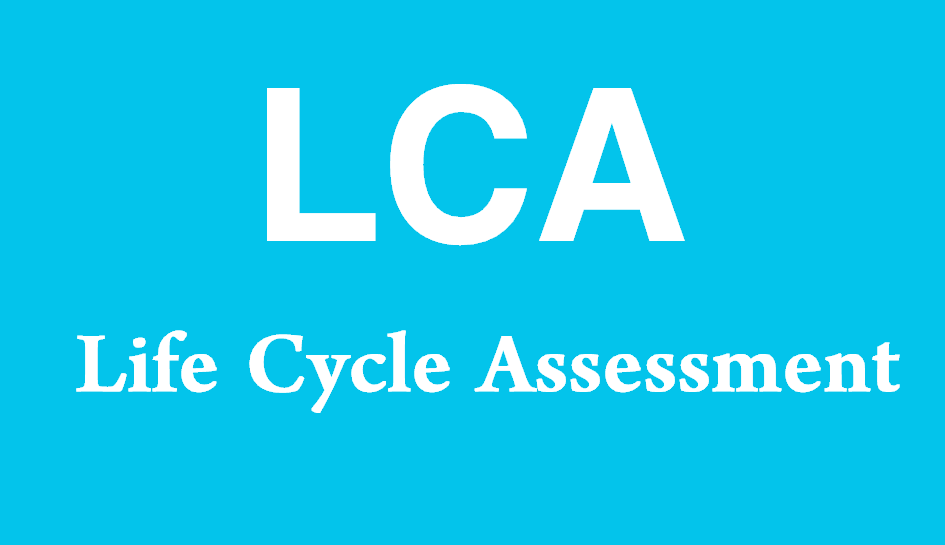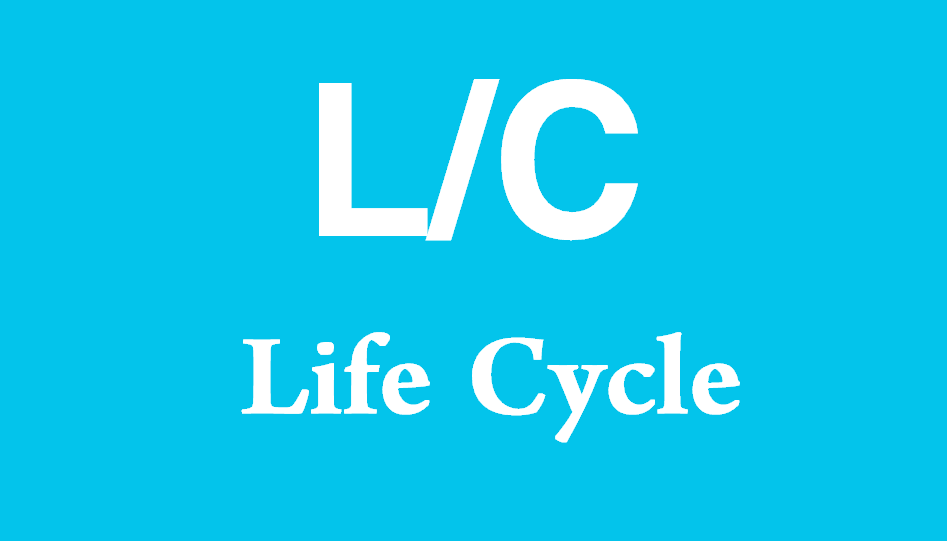What Does LCA Stand For?
LCA stands for “Life Cycle Assessment.” Life Cycle Assessment is a systematic process used to evaluate the environmental impacts of a product, process, or service throughout its entire life cycle, from raw material extraction to disposal. This assessment helps identify opportunities for reducing environmental impact and improving sustainability.

Comprehensive Explanation of Life Cycle Assessment (LCA)
Introduction to Life Cycle Assessment
Life Cycle Assessment (LCA) is a methodology for assessing the environmental aspects and potential impacts associated with a product, process, or service. By examining every stage of the life cycle—from raw material extraction, production, and use, to disposal—LCA provides a comprehensive view of the environmental impacts. This holistic approach helps identify opportunities for improvement, supports sustainable decision-making, and promotes transparency in environmental performance.
The Stages of LCA
Goal and Scope Definition
The first stage of an LCA involves defining the goal and scope of the assessment. This includes specifying the product or process to be studied, the purpose of the assessment, the boundaries of the system, and the functional unit (a measure of the function of the studied system). This stage sets the framework for the entire assessment and ensures that the study is aligned with its intended use.
Life Cycle Inventory (LCI)
The Life Cycle Inventory phase involves compiling an inventory of relevant energy and material inputs and environmental releases associated with each stage of the life cycle. Data is collected on the inputs (e.g., raw materials, energy) and outputs (e.g., emissions, waste) for each process within the system boundaries. This inventory provides the foundation for evaluating the environmental impacts.
Life Cycle Impact Assessment (LCIA)
The Life Cycle Impact Assessment phase evaluates the potential environmental impacts associated with the inputs and outputs identified in the LCI. This involves classifying and characterizing the inventory data into impact categories such as global warming potential, ozone depletion, acidification, and eutrophication. Impact assessment methods, such as the CML method or the TRACI method, are used to quantify these impacts.
Interpretation
The final stage of an LCA is the interpretation phase, where the results of the LCI and LCIA are analyzed to draw conclusions and make recommendations. This involves identifying significant issues, evaluating uncertainties, and considering the results in the context of the defined goals and scope. The interpretation phase aims to provide clear, actionable insights to inform decision-making and improve sustainability.
Applications of LCA
Product Development and Design
LCA is widely used in product development and design to assess the environmental impacts of new products and identify opportunities for improvement. By integrating LCA into the design process, companies can develop more sustainable products and reduce their environmental footprint.
Environmental Policy and Regulation
LCA informs environmental policy and regulation by providing a scientific basis for assessing the environmental impacts of different products and processes. Governments and regulatory bodies use LCA to develop and implement policies that promote sustainability and environmental protection.
Corporate Sustainability Strategies
Many companies use LCA as part of their corporate sustainability strategies. LCA helps businesses understand the environmental impacts of their operations, identify areas for improvement, and communicate their sustainability performance to stakeholders.
Supply Chain Management
LCA is used in supply chain management to evaluate the environmental impacts of different supply chain configurations and identify opportunities for improvement. This helps companies develop more sustainable supply chains and reduce their overall environmental impact.
Benefits of LCA
Comprehensive Environmental Assessment
LCA provides a comprehensive assessment of the environmental impacts associated with a product, process, or service. By considering the entire life cycle, LCA ensures that all relevant impacts are identified and assessed, providing a complete picture of environmental performance.
Informed Decision-Making
LCA supports informed decision-making by providing clear, actionable insights into the environmental impacts of different options. This helps businesses, policymakers, and other stakeholders make decisions that promote sustainability and reduce environmental impacts.
Identification of Improvement Opportunities
LCA helps identify opportunities for improving environmental performance by highlighting the stages of the life cycle with the greatest impacts. This enables companies to focus their efforts on the most significant areas and achieve more substantial improvements.
Enhanced Transparency and Communication
LCA enhances transparency and communication by providing a standardized and scientifically robust method for assessing environmental impacts. This helps companies communicate their environmental performance to stakeholders and build trust in their sustainability claims.
Challenges and Limitations of LCA
Data Availability and Quality
One of the main challenges in conducting an LCA is the availability and quality of data. Accurate and comprehensive data is essential for a reliable assessment, but obtaining such data can be difficult, especially for complex products and processes.
Complexity and Resource Intensity
LCA can be complex and resource-intensive, requiring significant time, expertise, and financial resources. This can be a barrier for smaller companies or organizations with limited resources.
Uncertainty and Variability
There are inherent uncertainties and variabilities in LCA due to the complexity of environmental systems and the assumptions made in the assessment. It is important to acknowledge and address these uncertainties in the interpretation phase.
Scope and Boundary Definition
Defining the scope and boundaries of an LCA can be challenging, as it involves making decisions about which processes and impacts to include or exclude. These decisions can significantly influence the results of the assessment and must be made carefully.
Methodologies and Standards in LCA
ISO 14040 and ISO 14044
The International Organization for Standardization (ISO) has developed a series of standards for LCA, including ISO 14040 and ISO 14044. These standards provide guidelines for conducting and reporting LCAs, ensuring consistency and comparability between studies.
CML Method
The CML method, developed by the Center of Environmental Science of Leiden University, is a widely used method for life cycle impact assessment. It provides a framework for classifying and characterizing environmental impacts based on the LCI data.
TRACI Method
The Tool for the Reduction and Assessment of Chemical and Other Environmental Impacts (TRACI) is a method developed by the U.S. Environmental Protection Agency (EPA) for life cycle impact assessment. It provides characterization factors for a range of impact categories, including global warming, acidification, and human health impacts.
Future Directions in LCA
Integration with Circular Economy Principles
The integration of LCA with circular economy principles is an emerging trend. By considering the entire life cycle and promoting resource efficiency, LCA can support the transition to a circular economy, where waste is minimized, and materials are continuously reused and recycled.
Digitalization and Automation
Advances in digitalization and automation are transforming the field of LCA. Digital tools and platforms are making it easier to conduct LCAs, improve data quality, and enhance the accuracy and efficiency of assessments.
Broader Environmental and Social Impact Assessment
Future developments in LCA may involve broader assessments that include social and economic impacts, in addition to environmental impacts. This holistic approach can provide a more comprehensive understanding of sustainability and support more informed decision-making.
Notes to Importers
Importance of LCA for Importers
For importers, LCA is a valuable tool for assessing the environmental impacts of the products they source and sell. By understanding the life cycle impacts of their products, importers can make more sustainable sourcing decisions, reduce their environmental footprint, and meet the growing demand for sustainable products.
Key Considerations for Importers
Sustainable Sourcing
Importers should use LCA to assess the environmental impacts of the products they source and prioritize suppliers with lower environmental footprints. This can help reduce the overall environmental impact of their supply chains.
Compliance with Regulations
LCA can help importers ensure compliance with environmental regulations and standards. By understanding the life cycle impacts of their products, importers can identify potential regulatory issues and take proactive steps to address them.
Customer Communication
LCA provides importers with robust data to communicate the environmental performance of their products to customers. This can enhance transparency, build trust, and differentiate products in the market.
Practical Tips for Importers
Conduct Regular LCAs
Importers should conduct regular LCAs of their products to ensure they are aware of their environmental impacts and can take steps to reduce them. This can help importers stay ahead of regulatory requirements and market trends.
Collaborate with Suppliers
Importers should collaborate with their suppliers to improve the environmental performance of their products. This can involve sharing LCA results, providing support for sustainable practices, and working together to develop more sustainable products.
Use LCA for Product Development
Importers can use LCA as a tool for product development, ensuring that new products are designed with sustainability in mind. This can help importers meet the growing demand for sustainable products and improve their market competitiveness.
Sample Sentences and Their Meanings
- “LCA helps us identify the environmental impacts of our products from raw material extraction to disposal.”
- This sentence explains that LCA assesses the entire life cycle of products to identify environmental impacts.
- “By using LCA, we can make more sustainable sourcing decisions and reduce our environmental footprint.”
- This sentence indicates that LCA supports sustainable sourcing and helps reduce environmental impacts.
- “LCA provides valuable data that we can use to communicate the environmental performance of our products to customers.”
- This sentence highlights that LCA data enhances transparency and customer communication regarding product sustainability.
- “Regular LCA assessments ensure that we stay ahead of regulatory requirements and market trends.”
- This sentence emphasizes the importance of regular LCA assessments for regulatory compliance and market competitiveness.
- “Collaborating with suppliers on LCA helps us improve the sustainability of our supply chain.”
- This sentence suggests that working with suppliers on LCA can enhance the overall sustainability of the supply chain.
Other Meanings of LCA
| Acronym | Full Form | Description |
|---|---|---|
| LCA | Life Cycle Assessment | A systematic process for evaluating the environmental impacts of a product, process, or service throughout its entire life cycle. |
| LCA | Low-Cost Airline | An airline that offers low-cost flights with minimal services. |
| LCA | Local Control Area | An area within an electrical grid where control is managed locally. |
| LCA | Lymphocytic Choriomeningitis Virus | A rodent-borne viral infectious disease. |
| LCA | Light Combat Aircraft | A lightweight military aircraft designed for combat operations. |
| LCA | Lateral Collateral Artery | An artery located in the knee region. |
| LCA | Legal Counsel Association | An organization representing legal professionals. |
| LCA | Load Carrying Ability | The capacity of a structure or vehicle to carry a load. |
| LCA | Local Currency Account | A bank account denominated in the local currency of the country. |
| LCA | Last Common Ancestor | The most recent ancestor shared by two or more species. |
| LCA | Lower Control Arm | A component of a vehicle’s suspension system. |
| LCA | Logistics Coordination Agency | An agency responsible for coordinating logistics operations. |
| LCA | Laboratory Control Area | An area within a laboratory designated for control and monitoring. |
| LCA | Link Control Adapter | A device used to manage data links in a network. |
| LCA | Low Cost Assembly | A manufacturing approach that focuses on reducing assembly costs. |
| LCA | Lease Contract Agreement | A legal agreement outlining the terms of a lease. |
| LCA | Linear Combination of Atomic Orbitals | A method used in quantum chemistry. |
| LCA | Local Conservation Area | An area designated for the conservation of natural resources. |
| LCA | Light Correction Algorithm | An algorithm used to adjust lighting in digital images. |
| LCA | Laser Communication Array | A system of lasers used for communication purposes. |


